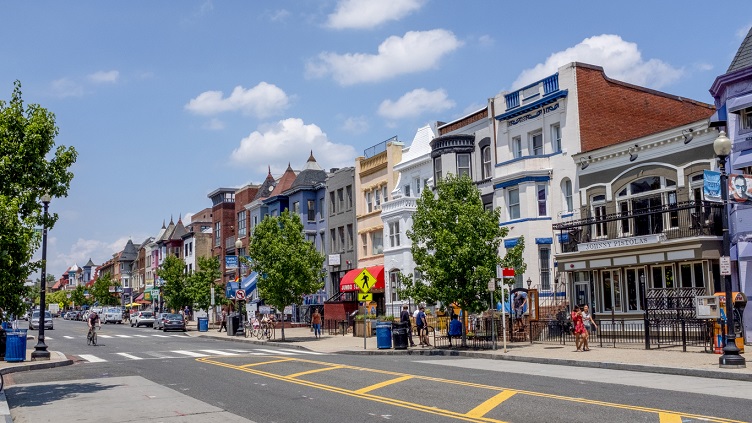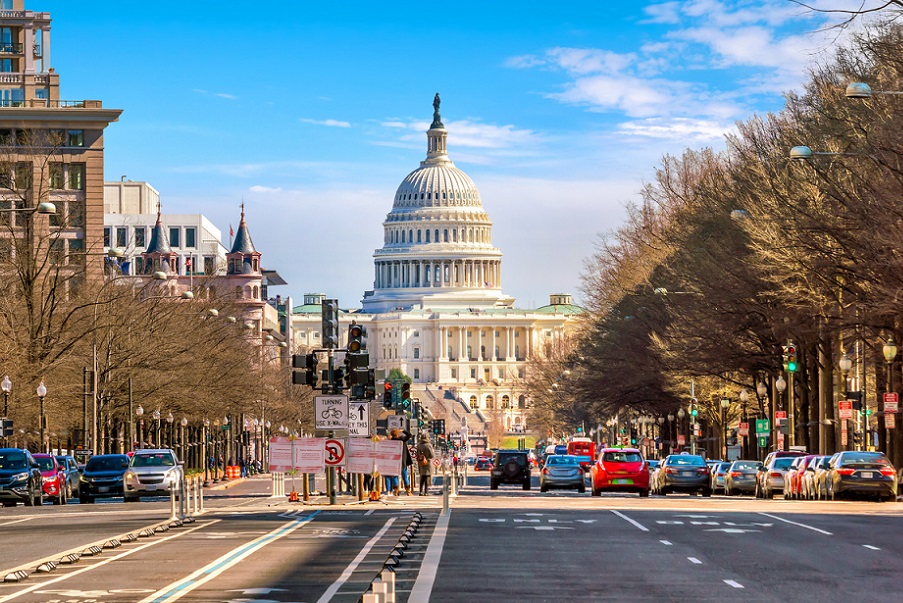Could D.C.’s Successes in Tackling Homelessness Work Here?
Recently, the mayor of our nation’s capital proclaimed that her city is on the verge of ending chronic homelessness. That might seem like a startling pronouncement, but Washington, D.C. Mayor Muriel Bowser has the numbers to back it up.
According to a statement released by Bowser’s office, the number of people experiencing homelessness in the District of Columbia has declined for six consecutive years. The overall number of people experiencing homelessness in D.C. decreased nearly 14% since last year and is nearly half of what it was six years ago, when Bowser began implementing a program called Homeward D.C.
“With the FY23 budget, we have the funding in place to end chronic homelessness, and in addition to the funding,” said Bowser in the statement. “We have the political will and the community support to make it happen. And we will.”
According to marketing site Statista, D.C. ranked 10th among major cities with the greatest number of people experiencing homelessness in 2020. The district’s progress in eradicating the crisis should come as welcome news to cities like Seattle, which ranked third behind New York and Los Angeles, respectively.
Question is: Could other cities replicate the successes of D.C.’s Homeward program, which includes expediting housing for residents living in encampments, transforming family homeless services systems, making significant investments in prevention programs and funding for permanent supportive housing vouchers for families, individuals and youth?
“D.C. is a really great example of what happens when you invest in programs that work,” said Lauren McGowan, United Way of King County associate vice president of ending homelessness and poverty. “That’s permanent supportive housing for chronically homeless individuals, homelessness prevention and diversion work for families, and really having a clear focus from local government and community partners into putting money behind the solution.”

“It’s not wildly different from what we do here,” McGowan added. “It’s not like they’re doing something where we’re like, ‘Oh wow, we never thought of that.’ It all comes down to the scale of it. Housing works, and this is the hard part to talk about in our community. People get frustrated by the tents that they see, and they should be. The same thing is happening in D.C.; I was there a few weeks ago, and there are more tents there now than ever. But there are more people getting into housing, too. It’s not the time to give up.”
D.C. is a really great example of what happens when you invest in programs that work.
Lauren McGowan, United Way of King County associate vice president of ending homelessness and poverty
Bowser’s second phase of Homeward D.C. includes spending $31 million to end chronic homelessness, $114.6 million for modernizations and renovations to shelters and the implementation of a streamlined intake system for single adults.
Wayne Wilson, United Way Community impact manager, homelessness and housing, said that solving homelessness for any jurisdiction “isn’t rocket science” if dollars are available to create adequate housing and services for mental health, physical health and substance abuse.
“Our biggest problem [in King County] is that even with vouchers current case managers and housing specialists are struggling to find apartments that will take them,” Wilson said. “Landlords can easily rent the limited number of available spaces at market rate and do not have to be bothered with the nuances of public subsidies.”
Both Wilson and McGowan said that D.C. is not alone in successful efforts toward decreasing homelessness. She said that Salt Lake City, for example, was once hailed for its permanent supportive housing for people experiencing homelessness. Wilson said Houston has also been lauded for its efforts.
“It ebbs and flows,” McGowan said. “And you see it specifically in certain populations across the country. [The U.S. has] done a good job addressing veterans’ homelessness. It had historically been a problem for Vietnam-era veterans. Under the Obama years there was a massive intervention in veterans’ homelessness in the form of the VASH voucher.
Launched by the U.S. Department of Housing and Urban Development (HUD), HUD-VASH paired the department’s Housing Choice Voucher (HCV) rental assistance with Veterans Administration case management and supportive services for veterans experiencing homelessness.
Our biggest problem [in King County] is that even with vouchers current case managers and housing specialists are struggling to find apartments that will take them.
Wayne Wilson, United Way Community impact manager, homelessness and housing
Washington, D.C. uses Point in Time Count numbers to demonstrate its reduction in people experiencing homelessness. Like the King County Regional Homelessness Authority, McGowan says that the Point in Time Count is not the best way to measure the depth and breadth of a jurisdiction’s homelessness. Still, McGowan said that the D.C. report should serve as a beacon for those committed to solving the problem.
“We know that housing works,” McGowan said. “People need hope right now because it feels like nothing works. We have to take advantage of every available situation. If there are tiny home villages, if there are places willing to shelter people, we need a variety of solutions, and we need to be adaptive and entrepreneurial, because it is unacceptable for people to sleep outdoors.”


Comments